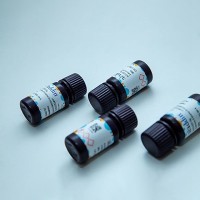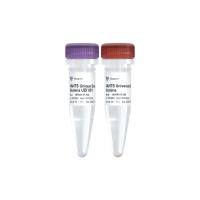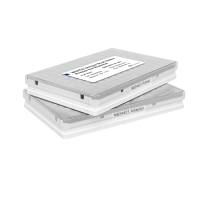Degenerate Primers
互联网
Degenerate Primers
For amplification of cognate sequences from different organisms , or for "evolutionary PCR", one may increase the chances of getting product by designing "degenerate" primers: these would in fact be a set of primers which have a number of options at several positions in the sequence so as to allow annealing to and amplification of a variety of related sequences . For example, Compton (1990) describes using 14-mer primer sets with 4 and 5 degeneracies as forward and reverse primers, respectively, for the amplification of glycoprotein B (gB) from related herpesviruses. The reverse primer sequence was as follows:
TCGAATTC NCCYAAYTGNCCNT
where Y = T + C, and N = A + G + C + T, and the 8-base 5'-terminal extension comprises a Eco RI site (underlined) and flanking spacer to ensure the restriction enzyme can cut the product (the New England Biolabs catalogue gives a good list of which enzymes require how long a flanking sequence in order to cut stub ends). Degeneracies obviously reduce the specificity of the primer(s), meaning mismatch opportunities are greater, and background noise increases; also, increased degeneracy means concentration of the individual primers decreases; thus, greater than 512-fold degeneracy should be avoided. However, I have used primers with as high as 256- and 1024-fold degeneracy for the successful amplification and subsequent direct sequencing of a wide range of Mastreviruses against a background of maize genomic DNA (Rybicki and Hughes, 1990).
Primer sequences were derived from multiple sequence alignments; the mismatch positions were used as 4-base degeneracies for the primers (shown as stars; 5 in F and 4 in R), as shown above. Despite their degeneracy, the primers could be used to amplify a 250 bp sequence from viruses differing in sequence by as much as 50% over the target sequence, and 60% overall. They could also be used to very sensitively detect the presence of Maize streak virus DNA against a background of maize genomic DNA, at dilutions as low as 1/109 infected sap / healthy sap (see below).
Some groups use deoxyinosine (dI) at degenerate positions rather than use mixed oligos: this base-pairs with any other base, effectively giving a four-fold degeneracy at any postion in the oligo where it is present. This lessens problems to do with depletion of specific single oligos in a highly degenerate mixture, but may result in too high a degeneracy where there are 4 or more dIs in an oligo.








